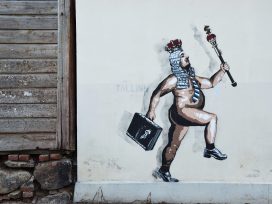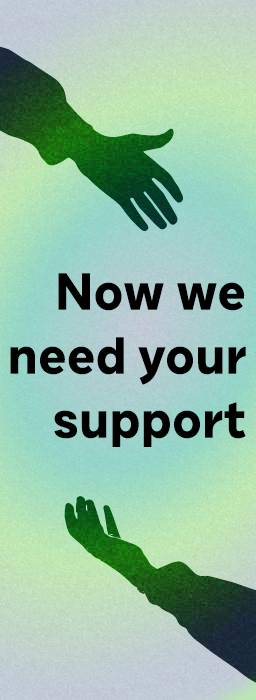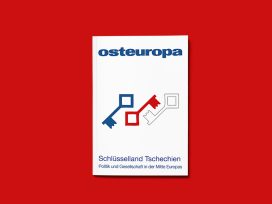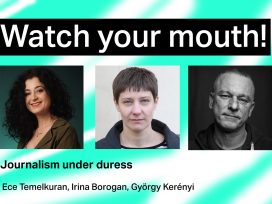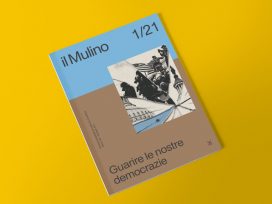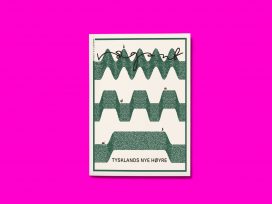The first time I visited Lithuania was in the summer of 1993, a year and a half after the Soviet Union had collapsed. At the corners of the so-called Green Bridge, on the River Neris, near the centre of Vilnius, four groups of Soviet statues stood out in the classic style of socialist realism (peasants, students, workers and soldiers). In the hotels the sheets were too short to cover the length of the bed. And in the evening the streets of the old city were shrouded in a darkness that made the beauty of the Baroque palaces and churches even more enigmatic and fascinating.
At that time in Italy there was only one consulate issuing visas for all three Baltic republics (Lithuania, Latvia and Estonia), and on the border with Poland the smuggling of cigarettes, household appliances and electronic objects was the default activity, carried out under the averted gaze of the border guards of both countries and the very occasional tourist who entered Lithuania via the old Warsaw-Suwałki-Šeštokai-Kaunas railway line.
Today, the Soviet statues are gone from the bridge, replaced by graceless planters without flowers; next to the cathedral the palace of the grand dukes of Lithuania was reconstructed, but in an unnatural white that recalls a wedding cake rather than a historical building; the old city is treated with maniacal attention and bursts with hotels; and on the border with Poland, customs controls are but a memory: since 2007, in fact, Lithuania has part of the Schengen area.
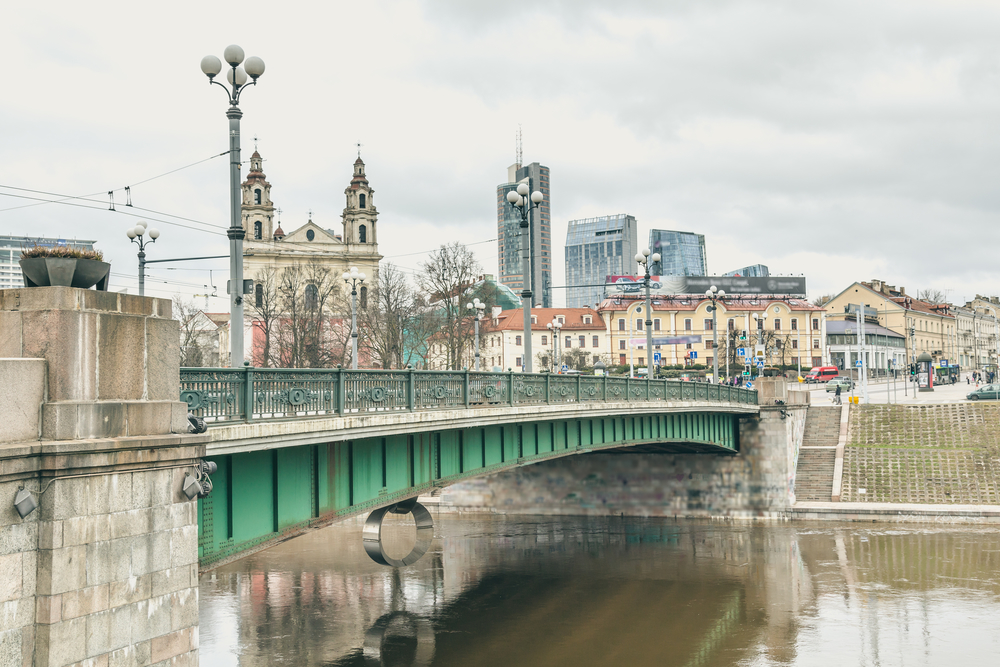
No more social realism: The Green Bridge over the River Neris in Vilnius, Lithuania. Source: depositphotos.com
Blurred history
In the last quarter of a century, in short, this country that first declared independence from the Soviet Union in March 1990 has successfully completed the whole process of transition to democracy and the market economy, entered NATO and the European Union, freed itself from the eastern embrace of Russia, and regained its place at the heart of the continent.
However, as often happens in central and eastern Europe, the richness of its cultural, historical and political affairs remains obscured by the effects of its 40-plus years as part of the Soviet bloc.
To try to get at the complexity of Lithuania, a precious tool is surely Magnetic North. Conversations with Tomas Venclova, edited by the translator and literary critic Ellen Hinsey and recently published by the University of Rochester, in the United States: it’s a dialogue almost four hundred pages long with the most important poet of this Baltic country, a dissident, intellectual, exile and in some ways the critical conscience of almost a century of Lithuanian history.
Still little translated elsewhere in Europe, Venclova was born in 1937 in Kaunas, then the capital of independent Lithuania, and went through the second two-thirds of the twentieth century observing and experiencing at first hand the violence of war, the Shoah and the years of Soviet occupation.
Witness to the story
The son of Antanas Venclova, a not-very-exalted scholar who was a convinced supporter of the Soviet state, and the nephew, on his mother’s side, of the philologist and classicist Merkelis Račkauskas, one of the great figures of early twentieth century Lithuanian culture, Tomas Venclova began to take an interest in literature during his adolescence. He wrote, he translated, he actively participated in the literary life of the fifties and sixties, and witnessed the great cultural tensions that marked those decades, actually more in Moscow and Saint Petersburg than in Vilnius: from the accusations by Andrei Zhdanov, the guardian of the realist-socialist orthodoxy, against Anna Akhmatova and Mikhail Zoshchenko, in the Pasternak case, and through to the persecution and exile of his friend, the poet Joseph Brodsky.
It is in those years, especially after 1956, that Venclova gradually built his resistance to the Soviet regime and approached the world of dissidence. In 1975 he wrote a letter to the central committee of the Lithuanian Communist Party to request permission to emigrate; a few months later he was among the founders of the Lithuanian Helsinki Group, the first human rights organization in Soviet Lithuania, and in 1977 he finally managed to leave the country to settle in the United States, where within a couple of years he would become a professor of Russian and Polish literature at Yale University.
Moving between the great story, which is always the background to the narration, and the small events that concern the world of family, friendships and personal experiences, the book has the great merit of having the frankness typical of confessions and at the same time the expository clarity of an essay, thanks to the calm way in which Venclova organizes his memories and to the interviewer’s ability to give the text an extremely rational organization, without ever expiring in didacticism. Hence another merit of Magnetic North (the title is taken from a 1975 poem by Venclova): its extreme readability, which makes it accessible and exciting even for those unfamiliar with the verses of the Lithuanian poet or with the story of the country and the Soviet Union.
Lucidity, precision and torment
Its strength is therefore the ability to reflect in all its nuances the reality of nineteenth-century Lithuania, including the phases on which Venclova relies, in the stories and memories of family members, to rebuild a past that he has not witnessed first hand. This, and his images of the twenty years of independence, from 1919 to 1939, with its authoritarian temptations, embodied by President Antanas Smetona, to the first Soviet occupation of 1940, with the deportations of tens of thousands citizens of June of the following year, and above all the German invasion of 1941.
The poet’s personal memory becomes more vivid towards the end of the war, at the time of the return of the Soviets, while the forty years of Moscow’s rule, with Stalinism, the thaw, friendships, literary work and dissent are recalled and retold with a lucid and precise eye.
Magnetic North is also an extraordinary collection of stories: stories that are hidden inside each other, for example the de-Stalinization that started with Khrushchev’s ‘secret’ speech at the 20th Congress of the Communist Party of the Soviet Union in 1956, which marks the beginning of his break, albeit only political, with his father, his first literary experiments at the University of Vilnius, and the return from the Gulag of a beloved writer, Kazys Boruta.
In this labyrinth, on the one hand, Venclova seems to want to underline the existence of a Lithuanian national specificity, still cultural rather than political, and on the other trace the picture of a world in which life and literature, with their polemics and their battles do not exist in individual national spaces, but intertwine and enrich themselves in a wider universe, bouncing between Vilnius, Moscow and Saint Petersburg. Reading Magnetic North we learn about Lithuanian poets and writers, and about the originality of the Lithuanian language and culture. But one also learns to observe what happens in Vilnius and Kaunas in the broader, multinational and multilingual framework of the Soviet Union.
In Venclova, in short, the national point of view blends perfectly with a cosmopolitan and almost internationalist look.
The roots of stratification
This synthesis can be useful if you decide to leave the borders of the twentieth century to question the deepest identity of the country. Because if you already know from the pages of memories in Magnetic North how complicated it is to define Lithuanian identity, just take a walk around Vilnius – perhaps using the pages of My Europe by Czesław Miłosz dedicated to the city, as a guide – to understand that its current homogeneity hides a past of extreme linguistic, ethnic and religious variety.
In the few square kilometres of the old city there are Catholic churches, for Lithuanians and Poles, Uniate (mostly attended by Greek-Catholic Ukrainians), Orthodox and Evangelical. And, of course, synagogues.
The roots of this stratification date back to the beginning of the fourteenth century. It was then that Grand Duke Gediminas – the tower that bears his name is still one of the symbols of Vilnius – began to send letters to the four corners of Europe to invite artisans, peasants, monks and priests, to settle in Lithuania with their families : ‘I do not forbid Christians to worship God according to the ways of their faith, nor do I forbid it from the Russians, nor do I forbid it from the Poles. We will also venerate God according to our customs’, proclaimed the grand duke.
Thus in the last pagan limb of Europe, which had fought against attempts at conversion by the Teutonic knights, and which had embraced Christianity only in 1385, the seeds of a great multinational state were sown: the Polish-Lithuanian confederation, i.e. the union of the Kingdom of Poland with the Grand Duchy of Lithuania, one of the great European powers between the seventeenth and eighteenth centuries.
The wisdom of Vilnius
As the historian Stasys Samalavičius writes in his Outline of Lithuanian History (1995), ‘in the fourteenth century the Grand Duchy of Lithuania was already a multi-ethnic state, in which the Lithuanians ruled over vast territories also inhabited by Russians, Belarusians and other populations.’
From the fifteenth century, important communities of merchants and German settlers, Scots and Italians formed in Lithuania: the latter were architects, craftsmen and workers who arrived to build the Baroque masterpieces of the city, never touched by the reformation or the counter-reformation of Tridentine Catholicism, and who decided to settle in Lithuania. Then of course there were the Poles, the Ruthenians, but also the Tatars, made to arrive in the fifteenth century from the Crimea by the Grand Duke Vytautas, and the Karaites, also from the Crimea and adherents of a particular current of Judaism. But above all there were the Jews. By the end of the eighteenth century they came to represent 45 percent of the population of Vilnius. ‘If you are looking for luck,’ said a Jewish proverb of the nineteenth century, ‘go to Łódź, but if you seek wisdom, go to Vilnius.’
‘In the countryside lived mostly Lithuanians, who were mainly farmers. But in the capital, in Kaunas and in the smaller cities the two communities – Lithuanians and Jews – traded and coexisted peacefully, even though they actually led separate existences and practically did not communicate with each other,’ says Almantas Samalavičius, philologist, professor of architecture, editor of the cultural magazine Kultūros Barai and son of the historian Stasys. ‘For example, in the tales of Abraham Karpinowicz, a local writer who used the Yiddish language, the protagonists are only Jews: there are no Poles or Lithuanians. Before the dismemberment of the country began with the partition of 1795, the Vilnius Jews had their kahal, or council for self-government, which managed the religious and legal affairs of the community independently.’
A raw nerve
This extraordinary heritage was destroyed by the Second World War. 95 percent of Lithuania’s Jewish population was exterminated. But not in the concentration camps: Lithuanian Jews were shot or beaten to death by the Germans and their collaborators. Between 40 and 60 percent of the community lived in small towns. Every Lithuanian settlement has been a place of genocide. In Vilnius there is still a Žydų gatve (Jewish street), there are small museums on the Shoah, there is a centre for tolerance, synagogues are left standing, and in the courtyard of a Soviet area in the old ghetto there is a bust of the Gaon of Vilna, a rabbi who lived in the eighteenth century and was one of the great sages of European Judaism. But more than anything else in the city today we perceive the sense of emptiness that the disappearance of that world has left behind, an absence that has changed the face and character of Vilnius forever.
Understanding what remains of the Shoah in the collective consciousness of today’s Lithuania is not easy. One book in particular, Mūsiškiai (‘Our People’ or ‘Us’) by journalist Ruta Vanagaite, helped open the debate on the extermination of the Jews, shedding light on anti-Semitism before the German occupation and on the participation of the local population in the massacres carried out between 1941 and 1944. The journalist’s work was not without controversy; after the success of Mūsiškiai, she wrote a book about Lithuanian partisans, who hid in the woods and fought the Soviets until the early 1950s. Vanagaite accused one of their leaders, Adolfas Ramanauskas, of having collaborated with the KGB. Submerged by a wave of criticism for having sullied the memory of a national hero, she was fired by her publishing house and her books were removed from the market and pulped.
Her work, however, touched a nerve. ‘The sense of guilt is a complicated sentiment to be elaborated and expressed,’ acknowledges Vaidas Saldžiūnas, journalist of the Delphi information site, active in all three Baltic countries. ‘The responsibilities were essentially personal, but they affected several thousand people, many more than was believed for decades. And no guilty person has ever been punished. There is still some reluctance among Lithuanians to accept that their ancestors were guilty of such atrocities. We are looking for excuses, arguments and alibis that can be used to exonerate or justify the collaborators, who also sided with the Germans in anti-Soviet guise.’
Another obstacle to the recognition of the uniqueness of the Shoah is the tendency, not least institutional, to equate the suffering of Lithuanians at the hands of the Soviets – deportations to the Gulag, executions – with the extermination of the Jews. Describing the Soviet occupation as Lithuania’s genocide, as the largest historical museum in the city, housed in the former headquarters of the KGB, does only confuses things and feeds misunderstanding (not by chance, Venclova prefers to talk about stratocide, that is the killing of a particular stratum of society).
Fortunately, however, this attitude has not led to explicit attempts to erase the responsibilities of the country, as happened in Poland with the recent approval of a law that punishes anyone who dares to speak about the participation of Poles in the extermination of Jews. It should also be added that Lithuanian citizens remembered as Righteous Among the Nations at Yad Vashem number 891, more than Hungarians or Italians.
However, going up the steps leading to the Evangelical church in Vilnius and realizing that they are made from the tombstones of the ancient Jewish cemetery of Šnipiškės, with the inscriptions still visible, makes an impression. As does the discovery that just above the remains of that cemetery, in the sixties, the Soviets had built a now-ruined palace of sport.
Allergy to nationalism
Before being buried for forty years under the Soviet blanket, and becoming the capital of a linguistically and ethnically homogeneous state, Vilnius had for centuries been a Russian and Lithuanian, Polish and Jewish, pagan and Christian, Orthodox and Catholic city.
It was the Jerusalem of the North and at the same time a sacred place for the history of the Poles: here, in fact, Poland’s national poet Adam Mickiewicz studied and matured. It was an important centre of a large multinational kingdom until 1795; in the nineteenth century it belonged to the Tsarist empire; and, between 1919 and 1939, it was part of the reborn Polish state. As their inhabitants have always known, defining their identity in a clear way was an impossible undertaking, better still useless.
A person from Vilnius, says Venclova, in an essay dedicated to the city, ‘can simultaneously belong to several cultures… he or she is in some ways reminiscent of [Juozas] Kėkštas – Lithuanian poet, Polish soldier and Russian prisoner.’ ‘My destiny,’ writes Miłosz, reflecting on his years of training, spent in the city, ‘was strongly influenced by an allergy to everything that smells of ‘national’ and a sort of physical repulsion for those who emit this smell.’
In Vilnius, this impossibility of defining one’s national affiliation has widened the space for individual freedom, but also imposed a heavy burden of doubt and choice, and ended up creating splits that cross small communities and even families.
Thus, at the beginning of the twentieth century, it could happen that one of the signatories of the 1919 Lithuanian Declaration of Independence, Stanisław Narutowicz, was the brother of the first president of independent Poland, Gabriel Narutowicz. And that among the four children of a typical aristocratic family of the grand duchy, the Iwanowskis of Vilnius, there were two supporters of the Belarusian cause, Helena and Wacław, a Polish patriot, Jerzy, and a protagonist of Lithuanian independence, Tadeusz.
An artificial construction
Returning to today, the personal choices of the brothers Iwanowski and Narutowicz and the refusal of Miłosz to be pigeonholed in a national group can be useful in dismantling some identity myths and defusing certain defaults used to interpret the political events of the former communist parts of Europe in the light of past history. The Lithuanian story shows that national identity is always a largely artificial construction, linked more to political and cultural sensitivity than to ethnicity, language or confession. And it confirms that in reality this identity is only one of the many factors that determine the development of a state, even if we often tend to consider it the real engine of history, especially in eastern European countries.
Moreover, today Lithuania should have all the characteristics of a country prey to nationalist and populist hysteria, as is happening to some other central European states. With a glorious past behind it, the experience of terrible traumas in the last two hundred years and the recent political and social developments (massive emigration and austerity policies launched in response to the 2008/09 financial crisis) Lithuanians would have no difficulty playing the card of historical victimization.
They could – and in the West, for many observers, this would be a natural consequence of their historical path – insist on protecting their ethnolinguistic homogeneity, conquered after decades of suffering, close themselves off to the outside world, and choose to be guided by a demagogue ready to blame the first available scapegoat for the difficulties linked to the transition. So far, however, they have not done so.
In today’s Lithuania the legacy of the seventeenth-century grand duchy may have at most fuelled a complex of grandeur that pushes the country to have a particularly ambitious attitude in foreign policy and to feel itself a sort of elder brother to Estonia and Latvia. But in Vilnius, identity and aggressive nationalism like that of Hungary’s Viktor Orbán does not seem to have taken root and, despite a climate that could be favourable, it has remained a minority phenomenon.
Zappa over Lenin
Even the country’s response to the so-called migration crisis – a theme that Polish and Hungarian nationalists have ridden, in order to win consensus and attack European institutions – was quite reasonable and not paranoid, despite the economic difficulties of the country and public opinion that was not really in favour of welcoming foreigners: ‘No country is immune to the risk of the growth of ultranationalist and xenophobic sentiments. But the phenomenon here seems under control,’ explains Arnoldas Pranckevičius, head of the European Commission’s representation in Vilnius. ‘There is a difference between the reactions of the Baltic countries to the refugee crisis and, for example, those of the Visegrad Group. We have supported the relocation project and we have respected the quotas that had been assigned to us.’
Even the electorate has remained calm. The party that fanned the embers of xenophobia and nationalism most vigorously in the 2016 elections took just 0.6 percent of the vote, and remains outside parliament.
The card of ‘Islamic invasion’ did not work because in these parts collective fear has a much more real aspect: Putin’s Russia. ‘At least from the point of view of symbols there has recently been a return of the feeling of national belonging’, comments Saldžiūnas. ‘But there is nothing xenophobic. Rather it is the idea of wanting to defend one’s own citizenship from external intrusions. It is no coincidence that this revival was triggered by the Ukrainian crisis, the annexation of Crimea by Moscow and the war in Donbas. The memory of 1990, when the Lithuanians did not have the tools to defend themselves from Soviet power, is still strong here.‘
Of course, the unexpected developments of recent history, first of all the election of Donald Trump to the presidency of the United States, means caution is required. But it hard to see the next European Orbán being born in Vilnius. This is also because the city retains a tolerant and peaceful character and widespread distrust of all forms of rhetoric and grandiloquence; maybe even a reluctance to take itself too seriously. The huge statue of Lenin in the main square of the city was torn down in 1991. It was replaced by a small wooden horse for children. The most notable statue now is to Frank Zappa.
